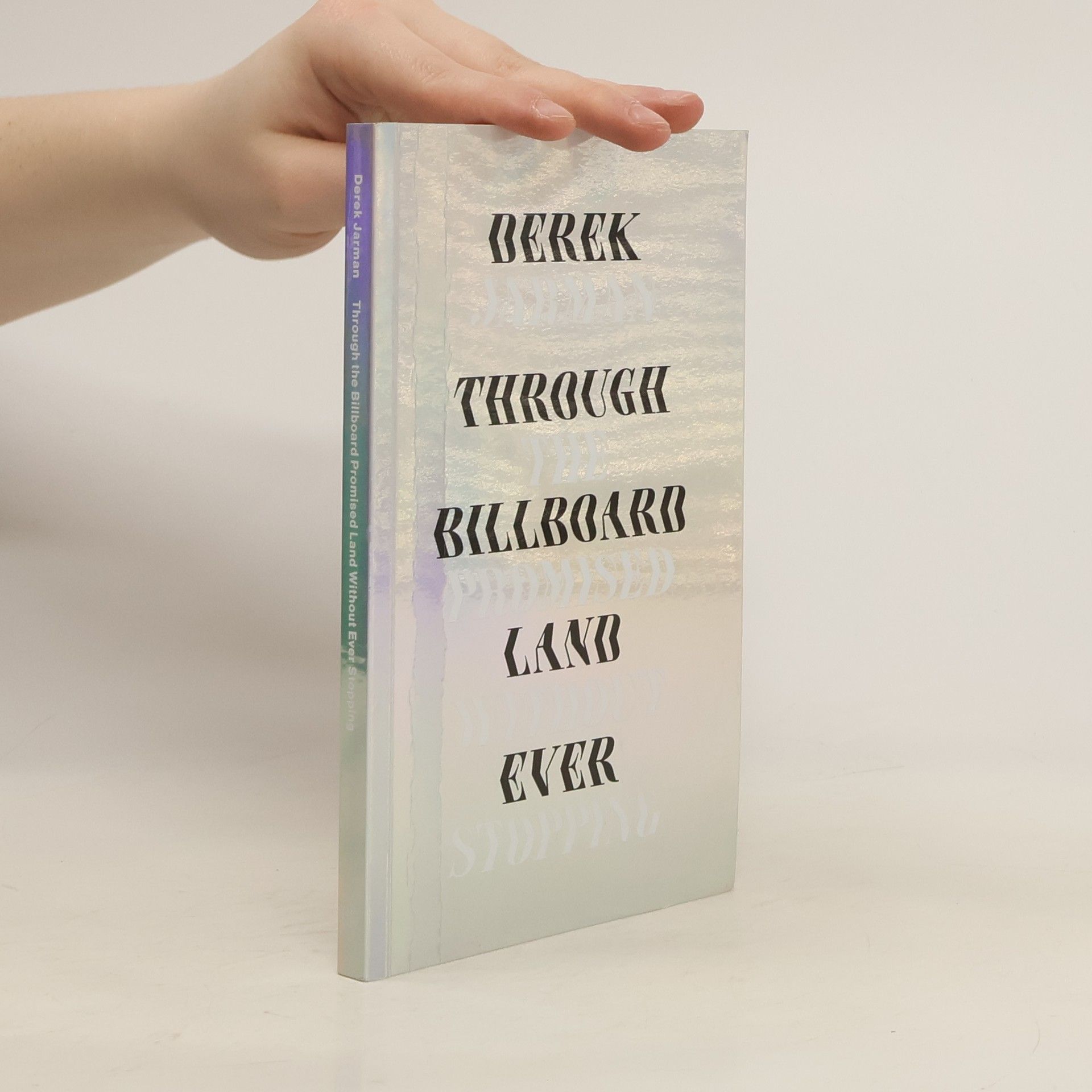Originally released as a feature film in 1993, the year before the acclaimed artist and filmmaker Derek Jarman's death due to an AIDS-related illness, 'Blue' is a daring work of art. The film - and this book's text - serve as iconoclastic responses to the lack of political engagement with the AIDS crisis. Written poetically and surrealistically, Jarman's text moves through myriad scenes, some banal, others fantastical.
Derek Jarman Books






Derek Jarman's Garden
- 144 pages
- 6 hours of reading
Derek Jarman's Garden is the last book Jarman ever wrote. It is a fitting memorial to a brilliant and greatly loved artist and film maker who, against all odds, made a breathtakingly beautiful garden in the most inhospitable of places - the flat, bleak, often desolate expanse of shingle overlooked by the Dungeness nuclear power station. Here is Jarman's own record of how the garden evolved, from its earliest beginnings in 1986 to the last year of his life. More than 150 photographs by his friend Howard Sooley capture the garden at all its different stages and at every season of the year, revealing the complex geometrical plan, magical stone circles and the beautiful and bizarre scupltures. We also catch glimpses of Jarman at work on the garden.
Derek Jarman worked for more than seven years to complete is feature film based on the life and work of Italian post-Renaissance painter, Caravaggio. This book interprets the film with photographs taken throughout the filming
Modern Nature
- 336 pages
- 12 hours of reading
A divine, meditative and inspiring diary of Derek Jarman's famous garden at Dungeness.'An essential - urgent - book for the 21st Century' Hans Ulrich ObristWITH AN INTRODUCTION BY OLIVIA LAINGIn 1986 Derek Jarman discovered he was HIV positive and decided to make a garden at his cottage on the barren coast of Dungeness.
Conceived of as a 'pharmacopoeia' - an ever-evolving circle of stones, plants and flotsam sculptures all built and grown in spite of the bracing winds and arid shingle - it remains today a site of fascination and wonder. Pharmacopoeia brings together the best of Derek Jarman's writing on nature, gardening and Prospect Cottage.
A meditation on the colour spectrum by the painter, poet and film-maker, Derek Jarman. He explains the use of colour in medieval painting through the Renaissance to the modernists. It also discusses the meaning of colour in literature, science, philosophy, psychology, religion and alchemy.
From the early seventies until his death in 1994, Derek Jarman made scores of films. Assembled here are six of his unforgettable film scripts: Akenaten , Jubilee , Bob-Up-A-Down , B Movie: Little England/A Time of Hope , Neutron , and Sod ’Em , five of which have yet to reach the screen and all of which confirm Jarman’s reputation as Britain’s leading independent filmmaker.
Dancing Ledge
- 256 pages
- 9 hours of reading
In non-linear snippets and including photographs of Jarman's artwork, he describes his sexual awakening in post-war England, his early struggles to create and find recognition for his art, and vivid accounts of his friends, lovers, and inspirations.
Through the Billboard Promised Land Without Ever Stopping is Derek Jarman's only narrative fiction, published for the first time by House Sparrow Press. Written in 1971, this surreal, lyrical work blends elements of a literary fairytale and an acid-trip road movie, influencing much of Jarman's later artistic endeavors. The poetic tale follows a blind young King and his valet, who, disguised as beggars, embark on a meandering journey without a clear destination. Their travels take them from Fargo through Movietown and along the Superhighway, where they picnic on the Lawns of Paradise and meet colorful characters like Pierrot, Borgia Ginz, and an Emperor who "smiles with the art of mirrors," alongside a Sphinx inscribed with "Silence is Golden." This foundational text introduces themes, images, and styles that permeate Jarman's work in painting, film, and design, while also reflecting the emerging ecological crisis through its contrast of nature's beauty and modernity's consumption. This edition includes facsimile images of Jarman's handwritten drafts, a link to an exclusive audio recording of him reading the story, a vivid foreword by Philip Hoare, a researched afterword by Declan Wiffen, and a heartfelt memoir by Michael Ginsborg, a close friend of Jarman during the story's creation.
Die Geschichte von Derek Jarman und seinem Rückzugsort Prospect Cottage in Dungeness ist von tiefer persönlicher Bedeutung, da der Ort während seiner HIV-Erkrankung sowohl Heim als auch kreative Inspirationsquelle wurde. Der Garten, als "Pharmakopöe" konzipiert, wird zum zentralen Element seiner künstlerischen Auseinandersetzung. In diesem Band finden sich Auszüge aus Jarmans Tagebüchern sowie aus seinem posthum veröffentlichten Werk, die Einblicke in seine Gedanken und den kreativen Prozess gewähren. Die Zusammenarbeit mit Keith Collins bietet einen zusätzlichen Kontext zu Jarmans Leben und Schaffen.

